The best horror movies on Netflix right now
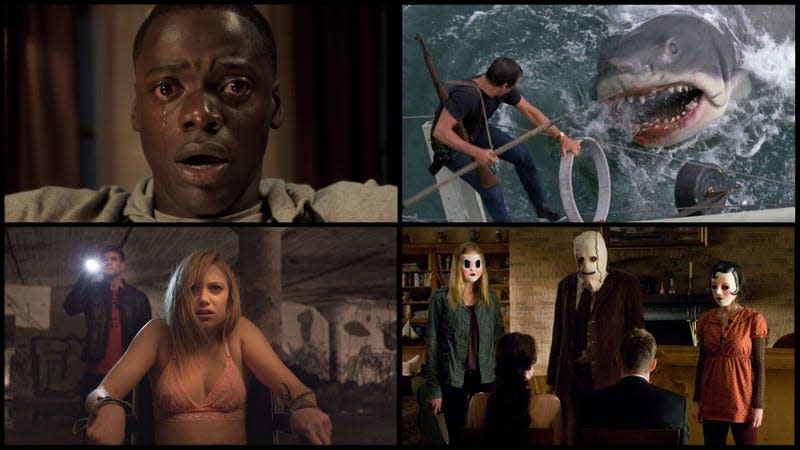
- Oops!Something went wrong.Please try again later.
- Oops!Something went wrong.Please try again later.
Clockwise from top left: Get Out (Universal Pictures); Jaws (Screenshot: YouTube/Universal); The Strangers (Screenshot: Universal/Rogue Pictures); It Follows (Radius/TWC)
Pick a film genre, any film genre, and Netflix is likely to have you more than covered in terms of viewing options—from the crème de la crème of cinema all the way down to the hate-watchingly bad. And, let’s face it, no genre spans that gamut like horror does. For every award-winning prestige flick like Jaws, there’s a wildly original one like Creep 2. So whether you’re looking for filmmaking that will get your heart racing and your guts churning, The A.V. Club is here to help. Avoid endless Netflix scrolling by sticking to the following films for the best horror cinema available on the platform right now.
This list was updated on October 20, 2023.
Read more
Black Man Asks Judge for Mercy on Behalf of His Racist Attacker
SBF Made $9 Billion Disappear. This Forensic Accountant Found It
Consumer Reports Says These Cars Are Currently The Wost Deals, Tom Disagrees
Santa Barbara Karen Charged For Racist Rant Against Latino Construction Worker
One Setting You Should Change In Super Mario Bros. Wonder ASAP
Say what you will about the bombastic rock-video opuses of Zack Snyder, but the man does know how to open a picture, doesn’t he? The director of some of the dourest superhero movies of the last decade has, if nothing else, mastered the lost art of the opening credits sequence—a talent he flexes once more at the onset of his palate-cleansing new film, the action-horror hybrid Army Of The Dead. Through his signature style of near-tableau, Snyder depicts the fall of a Las Vegas overrun with ghouls. A Liberace impersonator is devoured by his dancers. A parachuting soldier floats helplessly into a horde, his billowing chute becoming a canvas painted bright red. Dropped bombs engulf the strip in gorgeous plumes of blue and orange. All this carnage is, naturally, set to the ironic tune of an Elvis cover and stamped with hot-pink text, creating a pageant of doomsday excess, a Sin City literally consumed by sinful appetite. It may be the best introductory montage to a Zack Snyder movie since, well, the Johnny Cash end-of-the-world blur that kicked off the filmmaker’s first feature and last visit to the zombie apocalypse, his Dawn Of The Dead remake. [A.A. Dowd]
Before I Wake
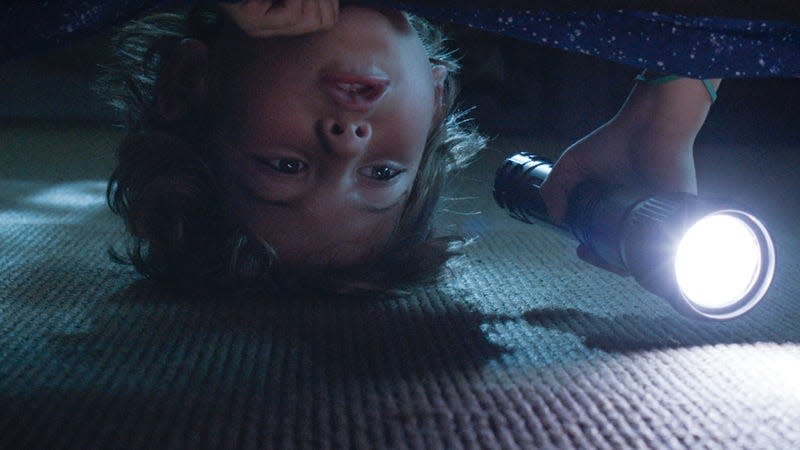
Before I Wake
A horror fantasy about the worst fears of parents and children, Before I Wake imagines a married couple, Jessie (Kate Bosworth) and Mark (Thomas Jane), trying to move on after their son’s death by taking in an 8-year-old orphan who’s gone from foster home to foster home under mysterious circumstances. Waiting for the new arrival, Mark screws grab bars to the tub wall (their boy drowned in the bath, which is basically every first-time parent’s nightmare) while Jessie takes down the family photos from the living room, enacting an unwittingly creepy ritual of preparation; skewed in a horror movie’s exposition, the things adults think will make kids safe seem conspiratorial and sick. But slyly, the film keeps turning viewer sympathies about who might be the bigger threat to whom. As the new foster parents soon discover, the kid, Cody (Room’s Jacob Tremblay), possesses a dangerous supernatural power, and when he falls asleep, his dreams haunt the house—projections of a small child’s manias (butterflies are Cody’s favorite subject) and uneasy thoughts about grown-ups and themselves. Often, Cody dreams of the dead son, Sean (Antonio Romero), the little boy’s face unnervingly frozen in the rictus of the only photo of him he’s seen. [Ignatiy Vishnevetsky]
Cam
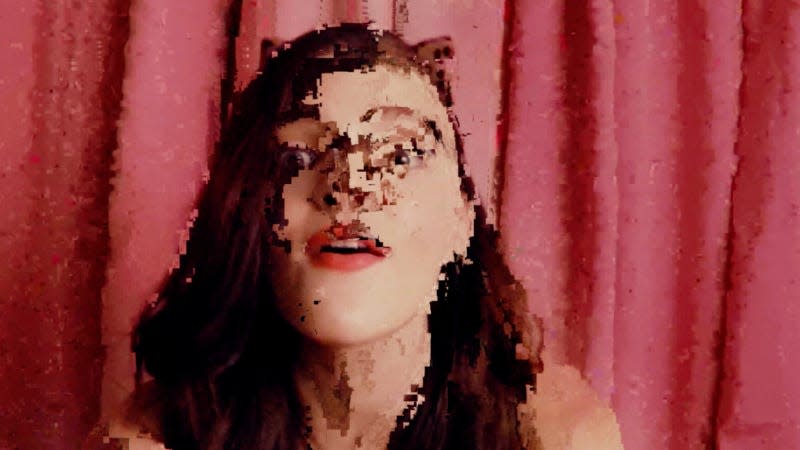
Cam
For years now, I’ve found it strange that there were only two or three good movies about the internet, the most important thing in the world. My wish for a film truthfully capturing all the connection, gratification, desperation, and despair of living online came true with this sophisticated thriller, in which a cam girl (Madeline Brewer, making a convincing argument for herself as a bona fide star) discovers that an automated doppelgänger has taken over her channel. There’s a lot to love here, from the low-key sex-positivity to the cringe comedy to the delectable supporting turn from former love witch Samantha Robinson. But I like Cam best as our most ruthlessly honest film about the nightmares of full-time freelancing. [Charles Bramesco]
Creep 2
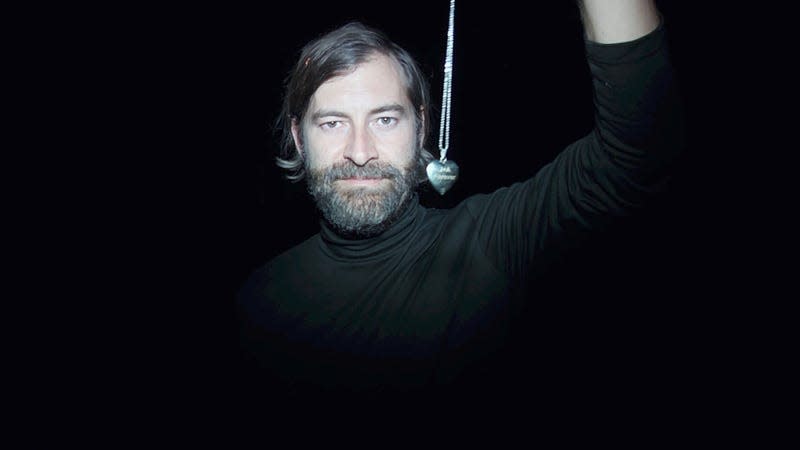
Creep 2
Let’s make something clear up front: Creep 2 is not a scary movie. Despite a plot that concerns a serial killer and the unsuspecting woman who answers his Craigslist ad and drives to his remote home in the woods, there is nothing about the film that would inspire much in the way of goosebumps. (A few small jump scares are played more for laughs than shrieks of fright.) Whereas the first Creep wrung tension from the familiar tricks of the found-footage style, the new one assumes the viewer already knows the situation with its homicidal subject, and doesn’t really try to generate chills from it. Instead, it’s a serial-killer midlife crisis: Within the first five minutes, Mark Duplass’ character has already desultorily cut someone’s throat, sat morosely as the blood congealed, and said, with heavy existential ennui straight to the camera he snuck into the house, “What’s happening to me?” A slasher sequel this is not. But for fans of the original who don’t mind the loss of scares, Creep 2 improves on the first film in nearly every way, from tone to dialogue to plot. Aesthetically, the two films are more or less identical, as director Patrick Brice maintains a straightforward functional approach to the material. As in the first, the protagonist is a filmmaker, or at least a wannabe filmmaker, thereby narratively justifying a steadier and more professional level of camerawork. This series isn’t all that pretty to look at, but as far as found-footage cinematography goes, it sits firmly in the upper tier. [Alex McLevy]
Crimson Peak
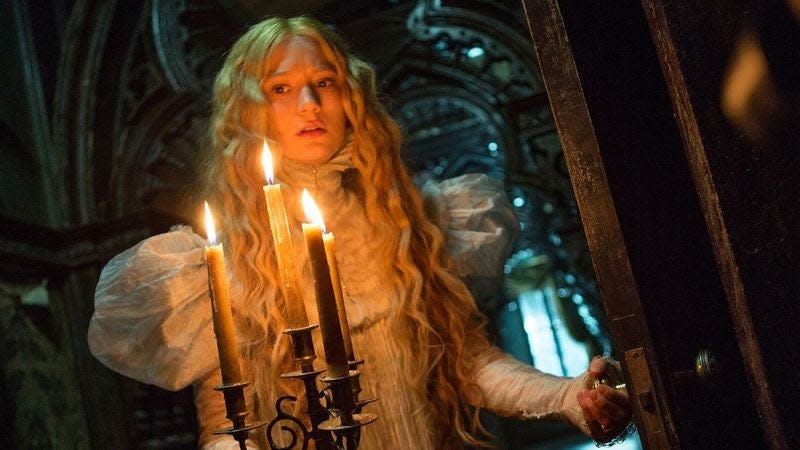
Billed as a haunted-house horror movie, it’s actually a violent R-rated romance geared toward the sensibilities of “14-year-old bookish girls,” as director Guillermo Del Toro described it in a recent preview screening. As in Del Toro’s chilling The Devil’s Backbone, the apparitions represent the sins of the past, writ here on a familial instead of a national scale. As such, they’re more tragic than terrifying, which, on the one hand, perfectly fits the swooning Gothic atmosphere. On the other, this means the scariest scenes of the movie appear early on, with diminishing thrills after that. [Katie Rife]
Gerald’s Game
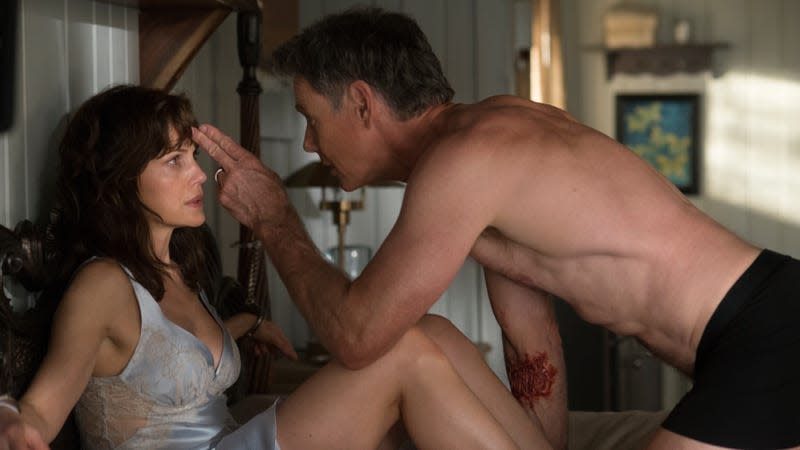
Gerald’s Game
Coming off of the positive critical buzz surrounding 2016’s Hush and Ouija: Origin Of Evil, [director Mike] Flanagan decided to re-team with Hush producer Netflix for a film adaptation of Gerald’s Game. It’s not an easy sell: Not only is King’s book structured in such a way as to make it extremely difficult to adapt—much of it takes place inside the mind of the main character, Jessie (Carla Gugino), as she lies handcuffed to a bed, alone and unable to escape, after her husband dies mid-kinky sex—but it deals with some very challenging themes of sexual abuse and the silencing of women. Thankfully, Flanagan’s film is up to the challenge, thanks in large part to Gugino and her compelling performance, which deftly expresses emotions from panic to grief to despair to rage, sometimes all at once. [Katie Rife]
Get Out
Get Out turns out to be more fun, and more provocative, than it is scary, at least in the traditional midnight-movie sense: The film works so well as a gauntlet of social horror that Peele almost didn’t need the more traditional thriller elements he introduces in the third act, when a carefully calibrated build in just-because-you’re-paranoid dread gives way to some disappointingly conventional survival games. (Here, the involvement of the prolific exploitation purveyors at Blumhouse Productions is most strongly felt.) There’s also a fairly needless subplot involving a TSA agent, played by LilRel Howery, who dual-functions as an exposition delivery system and a tension-breaking comic-relief sidekick; it’s the only part of the movie that betrays Peele’s sketch-comedy roots, plainly visible in his script for last year’s Keanu. [A.A. Dowd]
His House
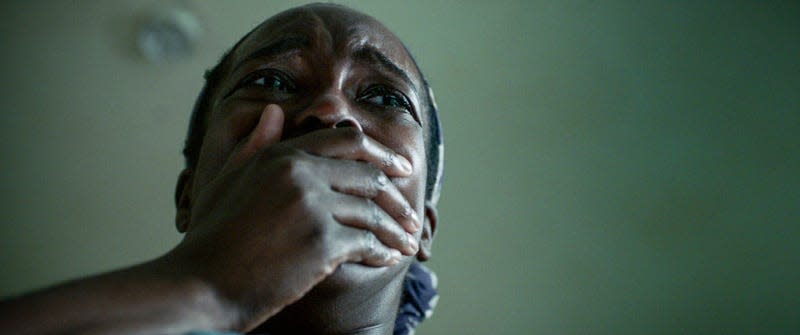
Most horror is grounded in something real. In His House, the feature debut of writer-director Remi Weekes, it’s the terror of war-weary Sudan and the tired, huddled masses fleeing a brutal life that nonetheless shaped who they’ve become. Bol (Ṣọpẹ́ Dìrísù) and Rial (Wunmi Mosaku) travel by land and sea, eventually sailing under the cloak of night to seek asylum on the shores of the U.K. Their arrival is bittersweet, to say the least: An accident claims their daughter along the way, and they’re briefly interred at a cold, uncaring detention center, before being granted filthy housing in a nondescript English town. What follows is a potent, heart-wrenching spin on the classic haunted house story, buoyed by two stellar lead performances. [Anya Stanley]
I Am The Pretty Thing That Lives In The House
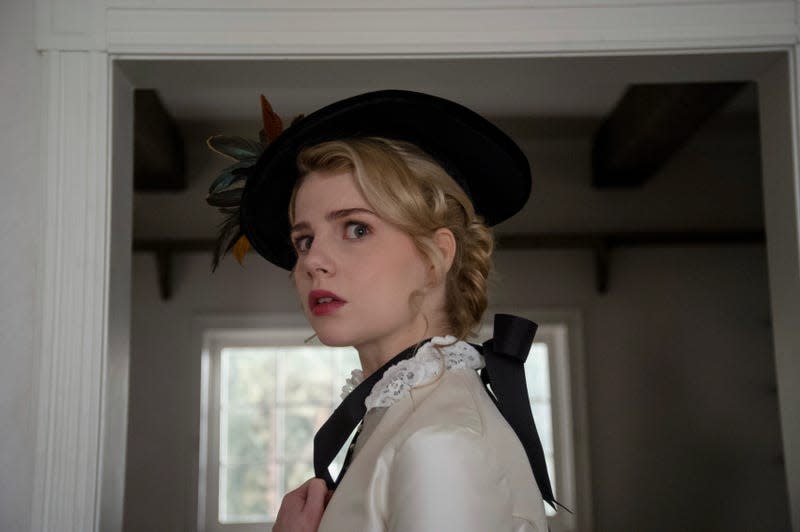
The horror renaissance continued unabated in 2016, as films like The Witch, The Invitation, The Eyes Of My Mother, Under The Shadow, Don’t Breathe, brought increased respectability to this frequently disrespected genre. But one of the year’s most singular horror movies, I Am The Pretty Thing That Lives In The House, still slipped through the cracks. Maybe it was the unwieldy title. Maybe it was the fact that the movie, an immersive sensory experience, went straight to Netflix. I’d wager the real reason Oz Perkins’ one-of-a-kind ghost story was slept on or even disliked (average grade from the A.V. Club comment community: C+) is that it’s entirely out of step with contemporary horror conventions and trends. It’s an exercise in pure unsettling atmosphere—one so off-kilter that it seems downright haunted itself. A small cult following, as opposed to widespread popularity, is probably apropos for something this rewardingly unusual. [A.A. Dowd]
It Follows
It sounds like the stuff of slumber parties, a cautionary tale to be whispered by flashlight or embellished over a flickering flame: Sleep with the wrong person, as the teenage heroine of It Follows does, and the nameless thing will come for you. On the outskirts of Detroit, Jay (Maika Monroe) finds herself the target of this relentless, shape-shifting entity—a curse passed on through sex with Hugh (Jake Weary), her handsome but mysterious new squeeze. As he explains, only the afflicted can see the specter, which will sometimes take the form of someone she knows. It will follow her, persistently but always at a walk, until she either falls into its clutches or passes the burden to a new sexual partner. “Never go anywhere with only one exit,” Hugh warns. There’s a primal, ingenious simplicity to that setup, one that writer-director David Robert Mitchell mines for one enormous scare after another. [A.A. Dowd]
Jaws
The first glimpse of the shark doesn’t happen until over an hour into Jaws, and the trio’s harrowing adventure at sea occupies only the final third, yet the escalating, agonizing tension is present from the start. John Williams’ iconic score does its share of the heavy lifting, but what’s really striking about Jaws is how much Spielberg gets from reaction shots, especially the eyes. Production headaches caused the schedule and the budget to balloon—55 days to 159 days and $3.5 million to $9 million, respectively—but its most masterful scene involves Scheider simply sitting on the beach, fretting over every scream and splash, imagining the worst. The worst finally arrives, but it’s resided in our heads well before it happens. [Scott Tobias]
Ma
Early marketing for Ma made the film look like a slasher riff on the “mammy” stereotype—basically the definition of “problematic”—but the final product is more nuanced than that. Rather than a cartoonish monster, lonely veterinary assistant Sue Ann (Octavia Spencer), a.k.a. “Ma,” is more like a Stephen King character: She’s psychotic, yes, but her madness is driven by deep psychological pain that goes all the way back to her high school years. Maybe that’s why she invites all the teenagers in town over to her house for keggers every Saturday night, taking shots and smiling approvingly at the wild house party she never got to throw back in the ’80s, when she was a shy outcast hiding behind thick coke-bottle glasses. But does she have some bigger, more vindictive plan in mind? [Katie Rife]
Ouija: Origin Of Evil
At its core, this is a movie about sisters, and Basso and Wilson are well cast as such, striking the right mixture of animosity and affection. (The entire cast is quite strong, selling the grief and terror of the story equally.) It’s not, although it may seem like it’s heading that way at times, an explicitly Christian film, a subtle but important difference that sets it apart from James Wan’s retro haunted-house franchise. A long-delayed teen horror film based on a board game isn’t a particularly rich mythology from which to draw, and Origin Of Evil’s story is accordingly thin at times. But, given the circumstances, this is the absolute best-case scenario, and Universal Pictures can thank Mike Flanagan for that. [Katie Rife]
The Strangers
A bit like Funny Games without the scolding, the minimalist home-invasion thriller The Strangers doesn’t take many words to describe: isolated vacation home. Masked tormenters. Helpless couple. And yet it’s precisely the film’s spare, disciplined, back-to-basics horror effects that lend it a sustaining chill; if the audience knew any more about who “the strangers” are and why they’ve chosen this house, this couple, and this night to do their worst, then a lot of the tension would dissipate. Making a frighteningly assured debut, writer-director Bryan Bertino understands the fundamentals thoroughly, and he has the patience to hold back and keep the tension hanging where a lesser director might have gone for the cheap shock. Many of the film’s shots and scenes go on several beats longer than expected, just to stoke a near-unbearable feeling of anticipation and dread. As a filmmaker, at least, Bertino seems to have more in common with the perpetrators than the victims. [Scott Tobias]
Under The Shadow
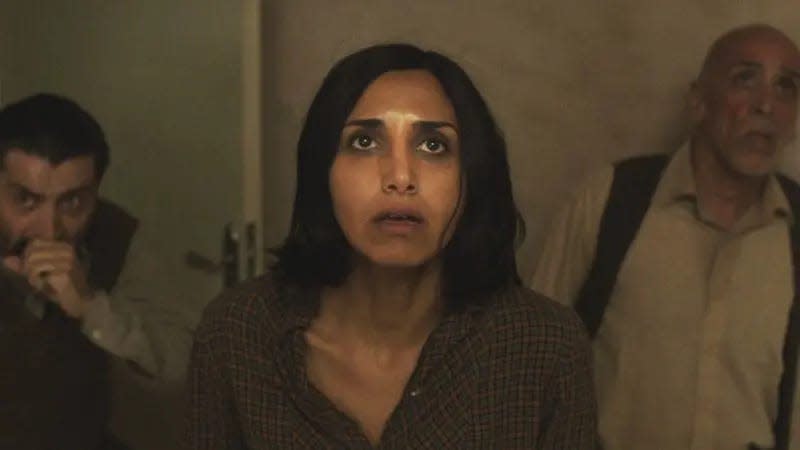
There’s a moment in Under The Shadow where the heroine does something that people in haunted-house movies almost never do: She grabs her child and bolts straight out the front door. Recent additions to the genre have devised some clever justifications for keeping the characters planted, ranging from financial incentive to house arrest to the explanation that the haunters will simply follow the haunted to their new digs. But Under The Shadow cuts through all that noise, allowing its scared-witless protagonist to make a sensible break for it. Trouble is, this young mother lives in Tehran circa 1988, and in her instinctive dash for safety, she fails to cover her head with a hijab. Forget abandoning the haunted house. How many horror movies feature someone fleeing the unholy terror in their home, only to be arrested for not wearing proper attire in public? [A.A. Dowd]
Us
You know you’re in the hands of a natural born filmmaker when you can feel yourself being tugged, as if by invisible forces, from one shot to the next, into a movie’s diabolical design. That’s the sensation provoked by Jordan Peele’s Us, which begins with a sequence so expertly shot, cut, and orchestrated that you can only submit to the internal, infernal logic of its construction. On the boardwalk of Santa Cruz circa 1986, illuminated by a carnival glow, a small girl (Madison Curry) strays from her parents’ side. She’s drawn, by signs and coincidence, to that enduring symbol of fractured identity, the hall of mirrors. What she finds inside is a different kind of movie monster: a reflection made flesh, a phantom spitting image of self. It’s the audience, though, that’s really being ushered into the funhouse. And by the end of this ominously enthralling prologue, bracketed on one side by a rabbit-ear TV and the other by actual rabbit ears, you’re ready to go wherever the movie plans to take you. [A.A. Dowd]
More from The A.V. Club
Nintendo Accounts Will ‘Ease’ Transition To Next Console, Exec Says
Apple Reportedly Cancels Jon Stewart’s Show Over His AI and China Talking Points
Report: Awful King Kong Game Was Made In A Year By Overworked Devs
Sign up for The A.V. Club's Newsletter. For the latest news, Facebook, Twitter and Instagram.

